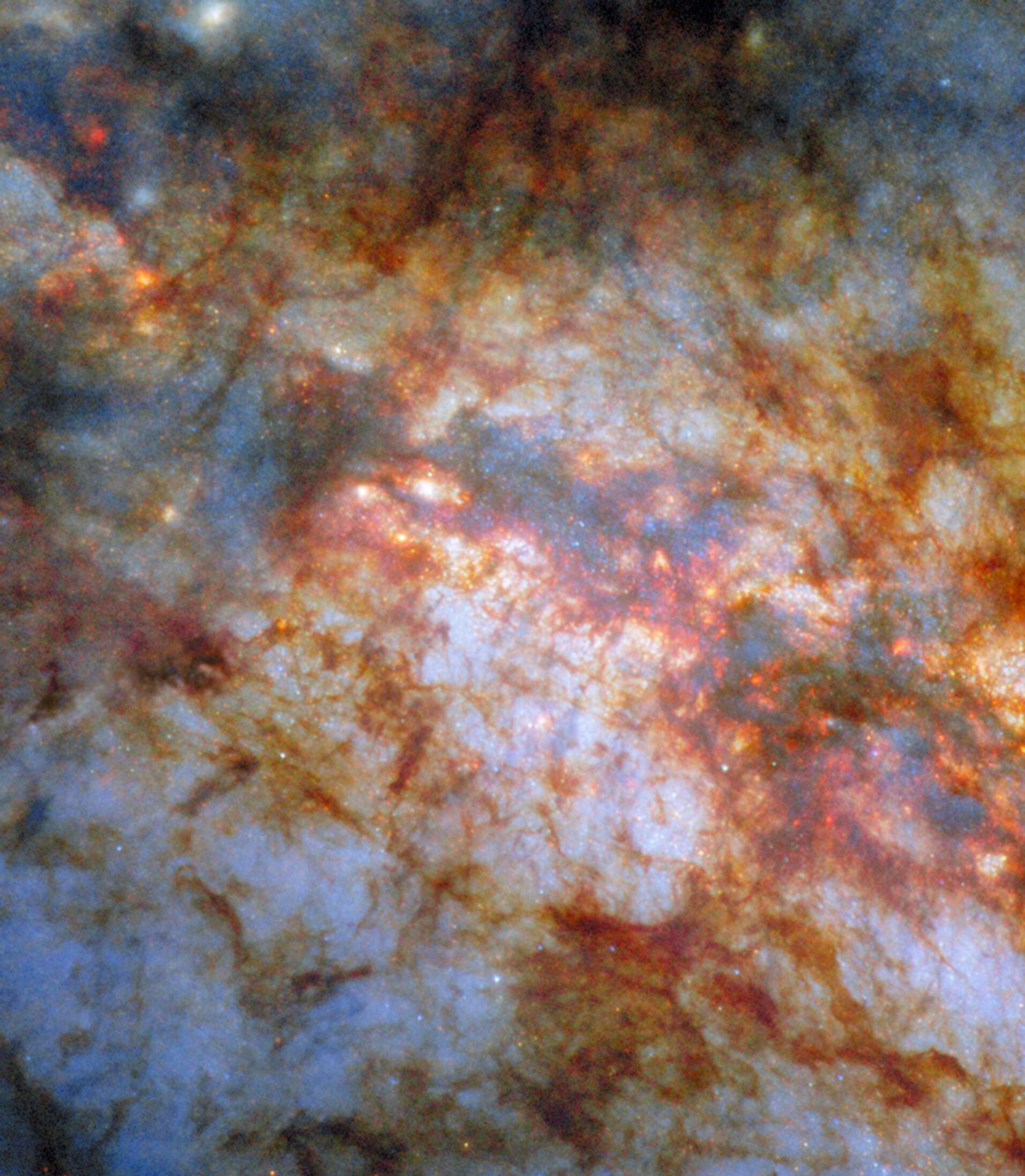- Hubble Home
- Overview
- Impact & Benefits
- Science
- Observatory
- Team
- Multimedia
- News
- More
2 min read

This NASA/ESA Hubble Space Telescope image reveals new details in Messier 82 (M82), home to brilliant stars whose light is shaded by sculptural clouds made of clumps and streaks of dust and gas. This image features the star-powered heart of the galaxy, located just 12 million light-years away in the constellation Ursa Major (the Great Bear). Popularly known as the Cigar Galaxy, M82 is considered a nearby galaxy.
It's no surprise that M82 is packed with stars. The galaxy forms stars 10 times faster than the Milky Way. Astronomers call it a starburst galaxy. The intense starbirth period that grips this galaxy gave rise to super star clusters in the galaxy's heart. Each of these super star clusters holds hundreds of thousands of stars and is more luminous than a typical star cluster. Researchers used Hubble to home in on these massive clusters and reveal how they form and evolve.
Hubble's previous views of the galaxy captured ultraviolet and visible light in 2012 and near-infrared and visible light in 2006 to celebrate Hubble's 16th anniversary. NASA's Chandra X-ray Observatory and Spitzer Space Telescope also imaged this starburst galaxy. Combining the visible and near-infrared light Hubble data with Chandra's x-ray and Spitzer's deeper infrared view provides a detailed look at the galaxy's stars, along with the dust and gas from which stars form. More recently the NASA/ESA/CSA James Webb Space Telescope turned its eye toward the galaxy, producing infrared images in 2024 and earlier this year. These multiple views at different wavelengths of light provide us with a more accurate and complete picture of this galaxy so that we can better understand its environment. Each of these NASA observatories delivers unique and complementary information about the galaxy's physical processes. Combining their data yields insights that enhance our understanding in a way that no single observatory could accomplish alone. This image features something not seen in previously released Hubble images of the galaxy: data from the High Resolution Channel of the Advanced Camera for Surveys.






